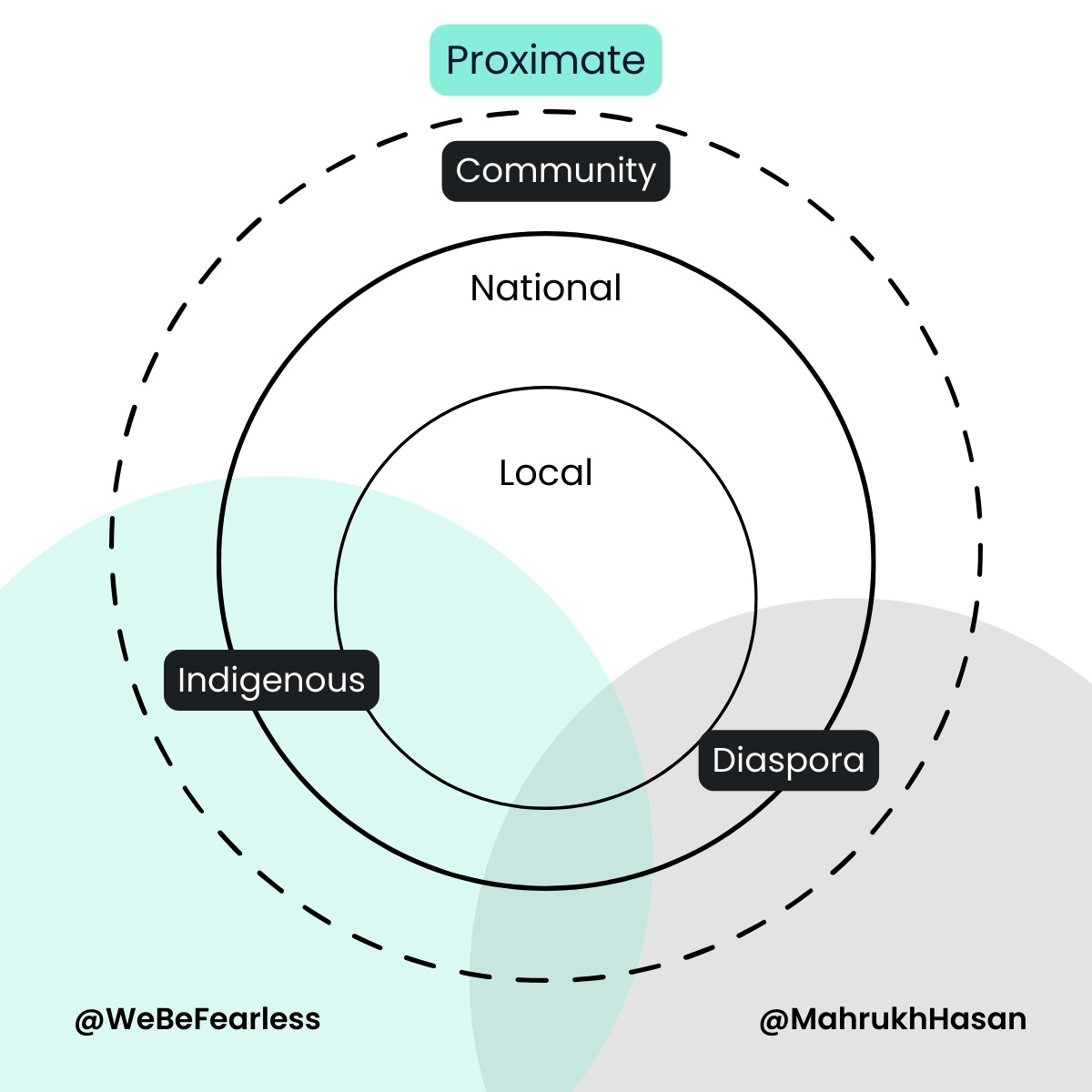Local led or locally misled?
The term locally led is being exploited.
Stolen from true community-led nonprofits.
And every time others incorrectly use this buzzword, we steal the fundraising spotlight from grassroots nonprofit leaders who deserve it most.
So as localization continues to reform philanthropy, we’ve worked with 230 clients in 50 countries and see four types of international organizations:
1. Nonprofits based entirely in the Global North, working in the Global South.
❌ Never locally led.
2. Nonprofits with headquarters and most leaders/trustees in the Global North — some claim “just a fundraising team” — then satellite offices in the Global South.
❓ Rarely locally led. Even with a co-CEO, 50% of the “led” is still not local.
3. Nonprofits with HQ in the Global South, where the CEO/founders from that community can access Global North donors through universities, living abroad, or fellowships.
✔️ Locally led, with some benefits.
4. Nonprofits with HQ in the Global South, where the CEO/founders from that community live in the community and have few donor networks outside their country.
✔️❗️ Locally led in the purest form. These are the most unseen, unheard, and underfunded (sometimes they’re not even registered organizations).
Words matter.
Because 95% of global foundations are based in North America and Europe. And local NGOs directly receive just 0.4% of all international humanitarian assistance.
Get this:
“We have international organisations from the Global North, register in-country and then call themselves local,” says Lulu Ng’wanakilala in Tanzania.
“We compete for the same resources meant for local/national organizations, however, they mostly win the funds because they have huge teams and resources from their headquarters who do their fundraising.”
It gets worse.
One funder of African leaders said they must investigate all the organizations that apply as locally led but hide expat CEOs on their websites.
Global names, local games.
If you’re in the first two categories above — you may be doing noble work, but ensure your messaging is equally noble.
You might say you partner with communities.
You could consider your model co-ownership.
You might use community-driven development.
Your programs — not organization — may be community led.
Or you could boast an international team, as we do at Mighty Ally.
But just like us — even though 70% of our staff are in the Global South — if a European or North American like me sits atop your team page…
It’s truth-stretching to claim locally led.
When in doubt:
Just look at your governance.
At the top of your org chart.
At who makes decisions.
Then stop the charade.
Let’s recognize real community leaders.
Because global branches don’t equal local roots.
💪🏽💛
The daily bonus
A great insight and graphic from Mahrukh ماہ رخ माह रुख़ (Maya) Hasan حسن हसन.
“But what of historically marginalized groups and communities that are often mobile, transcend borders, may not have documentation status, or may be officially persecuted by their governments? What about internally displaced persons, refugees, undocumented economic migrants, Indigenous groups, and diaspora groups? Where do they fit in?
The focus on locally-led development is inherently flawed because it fails to recognize and consider socio-economic factors within geographies. Identifying power dynamics at the local or national level is necessary to understand positionality, or distance and proximity to power, in the contexts of target populations for aid and development.
This is the heart of proximate leadership.
It is inclusive of community-led development, locally-led development, and Indigenous-led development. It is about shifting power to leaders who come from the group or community they serve and are proximate through shared experiences, identities, and/or geographic communities with the population they serve.”
Sneak peek
Coming up in tomorrow’s newsletter:
Clarify your fundraising message with a one-sentence theory of change.



